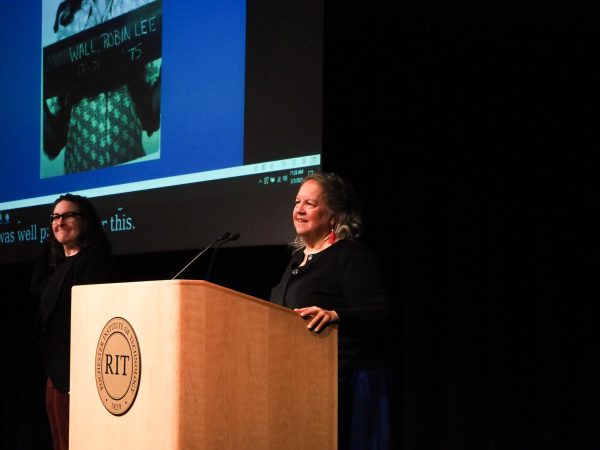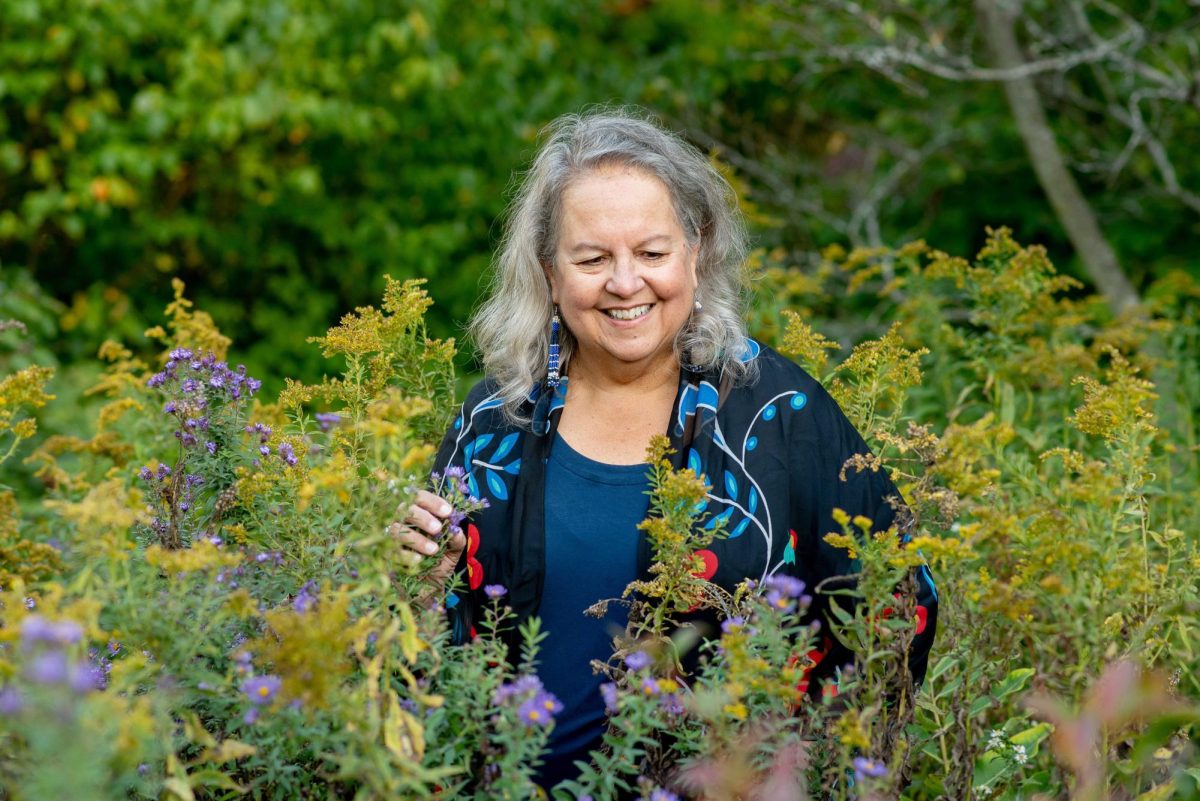On March 3, 2025, the RIT Ingle Auditorium was jam-packed with students and faculty attending a speech on sustainability by Dr. Robin Wall Kimmerer. An Indigenous citizen of the Potawatomi Nation, scientist, decorated professor, mother, and award-winning author, Dr. Kimmerer is particularly known as an advocate of the usage of both scientific and Indigenous knowledge in the field of sustainability.
Dr. Kimmerer spoke in depth on the origins of sustainability in Indigenous cultures. The activist spoke of her experiences as an Indigenous woman becoming a scientist, and unpacked why Indigenous people should be allowed to continue to be stewards of natural resources.
She especially stressed the significance of a worldview shift from “What more can we take?” to “What does the land ask of us?” She stated that our world all too often objectifies land. We see it as an object or commodity to be used for maximum gain or property to be owned and treated however we please, regardless of the damage done.
Dr. Kimmerer added that Westernized ideas of sustainability are much the same. They seek to sustain the land, specifically, so it can continue being exploited at maximum capacity. On the other hand, Indigenous sustainability strives to treat the land and its occupants as equals — family to live in harmony with.

According to Dr Kimmerer, the two viewpoints differ in how they refer to nature, plants, and creatures. In Indigenous culture, nature is considered alive and with personhood. However, Westernized culture objectifies nature. Dr. Kimmerer highlighted the usage of the word “it,” observing that you would never use ‘it’ to refer to a human, like a friend or a grandmother. The pronoun ‘it’ reduces plants and animals to objects.
“The consequences of objectification,” Dr. Kimmerer explained, “mean we don’t have to care.” In this way, the attitude can lead to the thoughtless exploitation of land by feeding into the capitalistic ideas entrenched in our culture.
Dr. Kimmerer suggested several possible avenues for the average person to engage in sustainability efforts. She mentioned many good pieces of media, highlighting Indigenuity by Dan Wildcat and Janine Benyus’ work in biomimicry.
Dr. Kimmerer emphasized the value of leaning on nature instead of just technology. “Wetland protection, afforestation, restoration, regenerative agriculture, soil building and working in partnership with natural solutions are both cost-effective and they produce all kinds of other ecological benefits beyond things like carbon capture. They create biodiversity, purify water… clean the air and make us happy as well.”
When asked about how students could best interact with Indigenous sustainability sources respectfully, Dr. Kimmerer highlighted the necessity of citing your sources. “Credit them,” she urged, “talk about this cultural specificity of the knowledge that you’re sharing.” She added that one of the best steps toward combating the erasure of Indigenous solutions to sustainability is by talking about the contributions these cultures have made.
Finally, to those losing hope in the world’s sustainability efforts as the earth seems to approach a breaking point, Dr. Kimmerer said that each of us holds more power than we might realize. She quoted one of her mentees, reminiscing, “As my student said to me… when everything hangs in the balance, it matters where I stand. She said, ‘I have the privilege of living in this critical time where every choice I make matters… in a big way. It matters what I buy. It matters what I study. It matters what I say. It matters how I spend my time. It matters how I vote.’ And I think she’s right, you know?”







